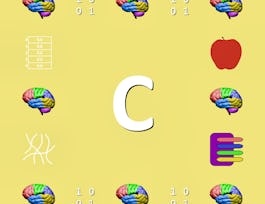With every smartphone and computer now boasting multiple processors, the use of functional ideas to facilitate parallel programming is becoming increasingly widespread. In this course, you'll learn the fundamentals of parallel programming, from task parallelism to data parallelism. In particular, you'll see how many familiar ideas from functional programming map perfectly to to the data parallel paradigm. We'll start the nuts and bolts how to effectively parallelize familiar collections operations, and we'll build up to parallel collections, a production-ready data parallel collections library available in the Scala standard library. Throughout, we'll apply these concepts through several hands-on examples that analyze real-world data, such as popular algorithms like k-means clustering.



Parallel programming
This course is part of Functional Programming in Scala Specialization


Instructors: Prof. Viktor Kuncak
60,152 already enrolled
Included with 
(1,840 reviews)
Skills you'll gain
Details to know

Add to your LinkedIn profile
See how employees at top companies are mastering in-demand skills

Build your subject-matter expertise
- Learn new concepts from industry experts
- Gain a foundational understanding of a subject or tool
- Develop job-relevant skills with hands-on projects
- Earn a shareable career certificate


Earn a career certificate
Add this credential to your LinkedIn profile, resume, or CV
Share it on social media and in your performance review

There are 4 modules in this course
We motivate parallel programming and introduce the basic constructs for building parallel programs on JVM and Scala. Examples such as array norm and Monte Carlo computations illustrate these concepts. We show how to estimate work and depth of parallel programs as well as how to benchmark the implementations.
What's included
9 videos5 readings3 programming assignments
We continue with examples of parallel algorithms by presenting a parallel merge sort. We then explain how operations such as map, reduce, and scan can be computed in parallel. We present associativity as the key condition enabling parallel implementation of reduce and scan.
What's included
6 videos2 programming assignments
We show how data parallel operations enable the development of elegant data-parallel code in Scala. We give an overview of the parallel collections hierarchy, including the traits of splitters and combiners that complement iterators and builders from the sequential case.
What's included
5 videos2 programming assignments
We give a glimpse of the internals of data structures for parallel computing, which helps us understand what is happening under the hood of parallel collections.
What's included
5 videos2 programming assignments
Instructors

Offered by
Recommended if you're interested in Software Development

University of London

DeepLearning.AI

University of California San Diego

University of Colorado System
Why people choose Coursera for their career




Learner reviews
1,840 reviews
- 5 stars
59.67%
- 4 stars
28.15%
- 3 stars
9.23%
- 2 stars
2.17%
- 1 star
0.76%
Showing 3 of 1840
Reviewed on Mar 28, 2018
For this course you should have Advanced English level. Cause sentesce construction is so difficult and words so unusual that i had to some times google what i have to do.
Reviewed on Feb 20, 2017
Truly great course. The assignments are designed very well. The instructor and videos were excellent. I only wish there had been more student participation in the forum.
Reviewed on May 16, 2017
The assignment could be optimized and avoid to be more academic since it may make student lost focus and spend too much time on the question itself rather than the parallel programming
New to Software Development? Start here.

Open new doors with Coursera Plus
Unlimited access to 10,000+ world-class courses, hands-on projects, and job-ready certificate programs - all included in your subscription
Advance your career with an online degree
Earn a degree from world-class universities - 100% online
Join over 3,400 global companies that choose Coursera for Business
Upskill your employees to excel in the digital economy
Frequently asked questions
Access to lectures and assignments depends on your type of enrollment. If you take a course in audit mode, you will be able to see most course materials for free. To access graded assignments and to earn a Certificate, you will need to purchase the Certificate experience, during or after your audit. If you don't see the audit option:
The course may not offer an audit option. You can try a Free Trial instead, or apply for Financial Aid.
The course may offer 'Full Course, No Certificate' instead. This option lets you see all course materials, submit required assessments, and get a final grade. This also means that you will not be able to purchase a Certificate experience.
When you enroll in the course, you get access to all of the courses in the Specialization, and you earn a certificate when you complete the work. Your electronic Certificate will be added to your Accomplishments page - from there, you can print your Certificate or add it to your LinkedIn profile. If you only want to read and view the course content, you can audit the course for free.
If you subscribed, you get a 7-day free trial during which you can cancel at no penalty. After that, we don’t give refunds, but you can cancel your subscription at any time. See our full refund policy.

